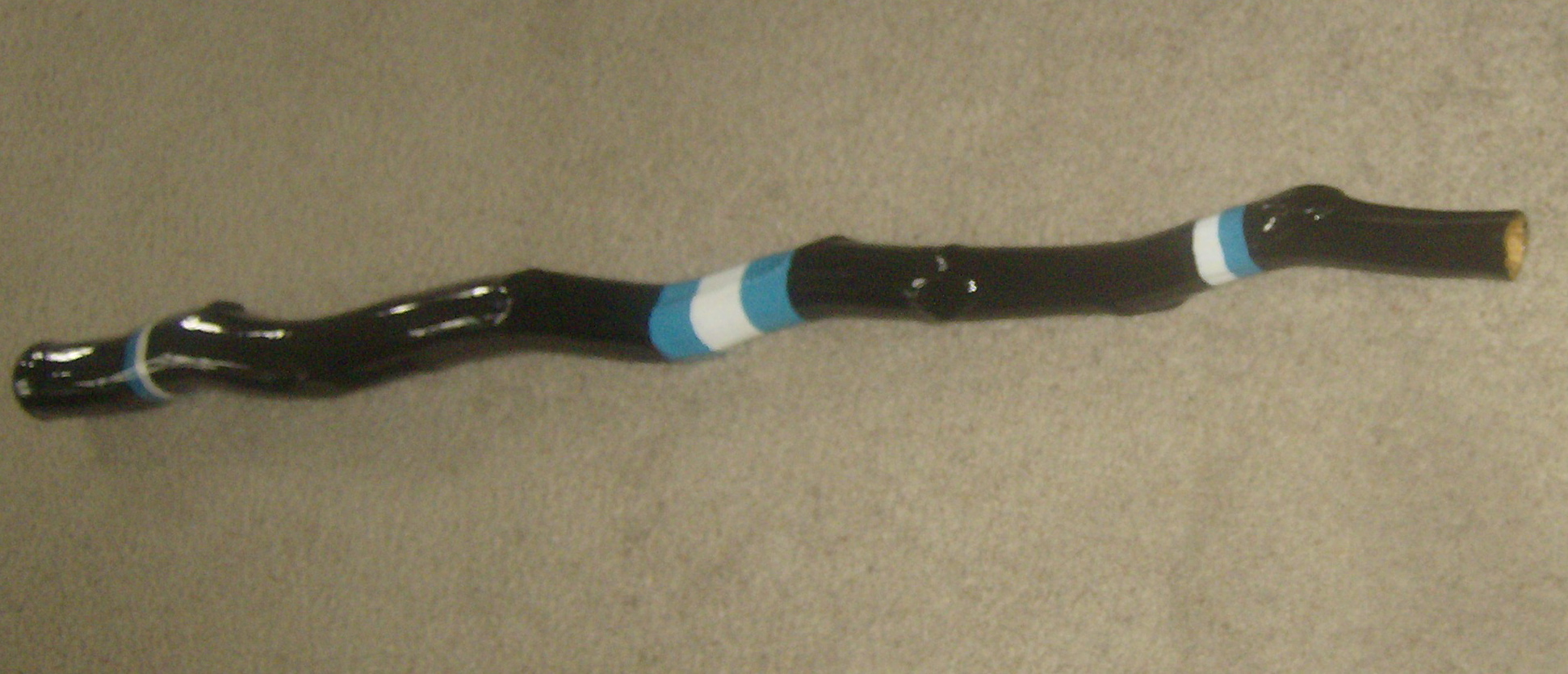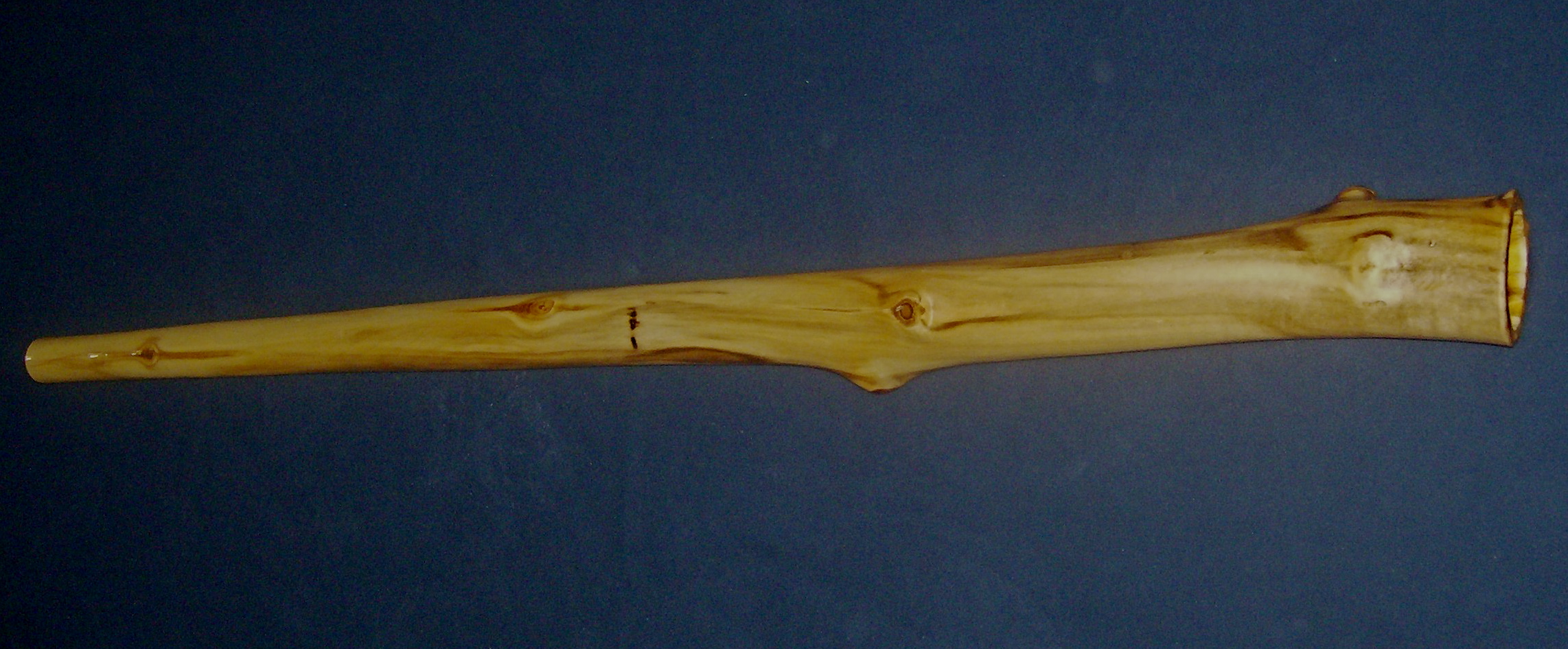| << Chapter < Page | Chapter >> Page > |
The didjeridu (also spelled didjeridoo or didgeridoo ) is a musical instrument that is an important part of the traditions of the Aboriginal people of northernAustralia. It is a simple aerophone consisting of a long hollowed tube shaped to create a mouthpiece at one end. Theinstrument is usually made of wood, but is considered to be in the brass family (sometimes called the "lip- reed" or "cup-mouthpiece" family) because, as with all "brass" instruments, itssound is created by buzzing the lips against the rim of the mouthpiece .



The typical didjeridu consists simply of a tube with a mouthpiece at one end. The tube is traditionally made from a termite-hollowedeucalyptus tree. (Sometimes a branch that is large enough and straight enough can be found, but more commonly, it is the trunk of a young tree.) When a hollowtree of the right size is found, the bark is removed, and its innards may be further hollowed and shaped to produce a better sound. The outside of theinstrument may be painted and/or varnished. Some modern instruments are made of other materials, such as bamboo or other kinds of wood.
The traditional instrument has no fingering holes, keys, valves, or slides. Some modern didjeridus have a slide constructionsimilar to a trombone, or even saxophone-style keys that allow a melody to be played, but these are unusual.
The typical didjeridu is between one and two meters in length, but some are longer than three meters. As with any wind instrument,larger and longer didjeridus produce lower sounds than smaller instruments. (See Wind Instruments: Some Basics for an introduction to the acoustics involved.) Some instruments have a more conical shape and some are more cylindrical , and this also affects the sound of the instrument.
The rim of one end opf the tube is altered slightly to form the mouthpiece . If one end of a didjeridu is already the right size and shape to accommodate the lips, simply smoothing it out to make itcomfortable is often enough to create a mouthpiece. In many instruments, though, a layer of beeswax is added to the rim. The consistency of the beeswax, which becomes malleable at warm temperatures, makes it ideal for shaping a comfortable, efficient mouthpiece. The diameter and thickness of the rim are similar to therim of the mouthpiece of a low brass instrument such as the tuba or trombone , and the technique for getting a sound is quite similar. In this family of instruments, the sound is created by "buzzing"the lips inside the mouthpiece rim.
The didjeridu originated in northern Australia. In fact, it can be considered a family of instruments, since several differentnative groups have a specific local version of the instrument, with a local name. (Aboriginal Australians come from a variety of related cultures, withdifferent languages and customs, not a single uniform culture.) A didjeridu made by the Yolngu people, for example, is a yirdaki. The term didjeridu isapparently a Western coinage, and is a generic name covering all Australian instruments of this type.

Notification Switch
Would you like to follow the 'Musical travels for children' conversation and receive update notifications?